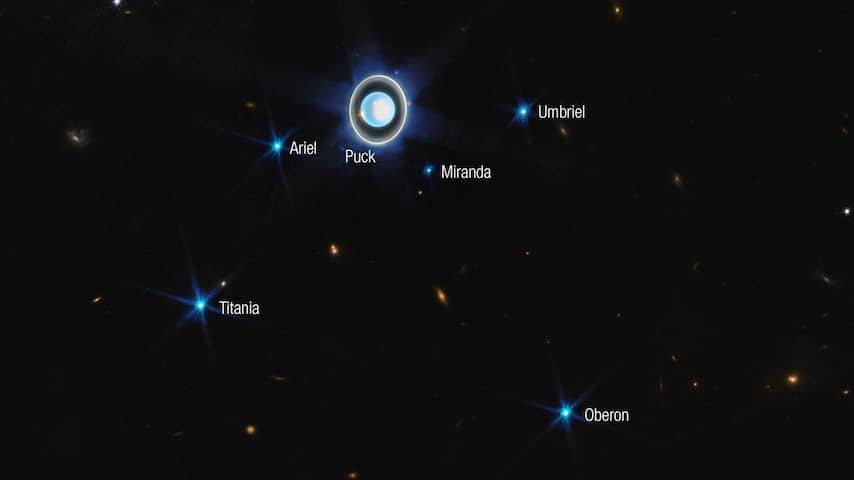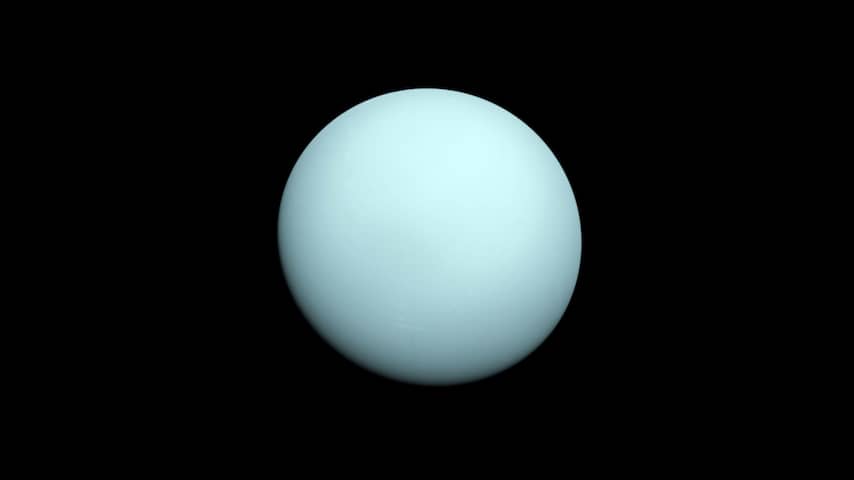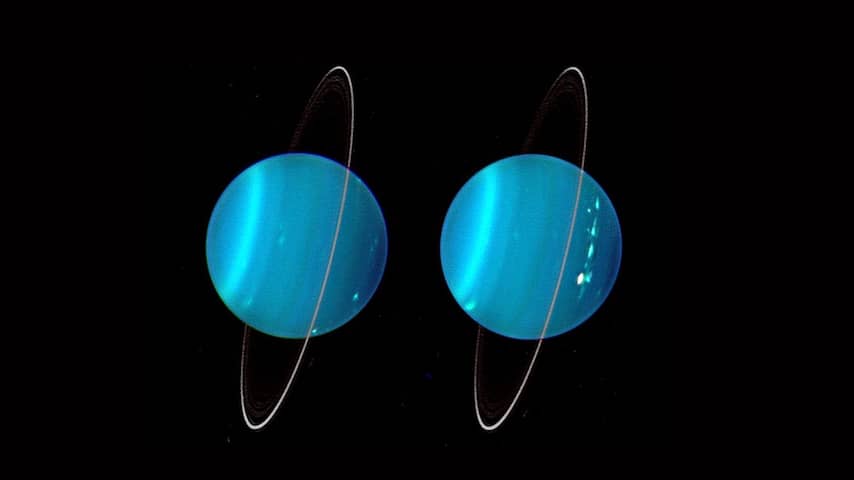The James Webb Space Telescope captured the planet Uranus beautifully. In the photo, the rings of the light blue ice giant are visible in detail. The planet also shows off one of its polar caps and there is an atmosphere with even clouds.
The James Webb set his sights on Uranus on February 6. Space agencies ESA and NASA shared the image with the world on Thursday. Last year, the telescope captured Saturn in an equally brilliant fashion.
The plate shows eleven of the thirteen rings of Uranus. Some of these rings are so shiny that they seem to flow into each other. In fact, James Webb’s infrared camera is so good that it managed to capture the two dusty inner rings of Uranus. These faint rings were only seen in 2004 by the Keck telescope in Hawaii.
When the Voyager 2 unmanned spacecraft flew by Uranus in 1986, it saw nothing more than smooth, pale blue marble. In fact, James Webb managed to capture most of Uranus’s 27 known moons.

Uranus shows off its north pole in all its glory
In James Webb’s image, the North Pole ice cap is visible to the right. It is currently facing the sun. As a result, scientists have never had such a good picture of the ice mass. It is now spring on this side of the planet. It will last until 2028.
On the edge of the polar cap is a bright cloud to the left. A second cloud can be seen to the left of Uranus. The clouds are likely large thunderstorm systems.
The planet’s south pole is currently on the other dark side of the planet and is not visible in the image.

The planet is lying on its side and rolling around the sun
Uranus is the seventh planet in our solar system from the sun. The celestial body owes its color to the atmosphere, which consists of a relatively large amount of methane.
The planet is at an angle of more than 90 degrees and is, so to speak, on its side. The ice giant therefore seems to revolve around the sun, while other planets rotate more.
The tilt also causes the poles of Uranus to lie where the equator is on other planets. There are also extreme differences in the seasons, so the temperature differences are huge.
The James Webb Space Telescope will keep its infrared eyes on Uranus for a bit longer. Then, Hubble’s successor will also see the other two rings, even fainter.

 DodoFinance Breaking News Made For You!
DodoFinance Breaking News Made For You!
